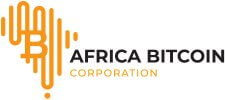Exploring the Copper Belt in Africa
The Copper Belt in Africa is a treasure trove of mineral wealth. Stretching across Zambia and the Democratic Republic of Congo, it’s a significant global copper source.

This region has shaped the economic landscape of these countries. But it’s not just about copper. The Belt is also a vital source of cobalt, a key component in modern technology.
In this article, we delve into the Copper Belt’s history, its economic impact, and the challenges it faces. Join us as we explore this fascinating region.
The Significance of the Copper Belt
The Copper Belt is a powerhouse of mineral production. It’s one of the world’s largest copper-producing regions. This makes it a vital player in the global mining industry.
But copper isn’t the only resource here. The Belt is also rich in cobalt. This mineral is crucial in the production of batteries for electric vehicles and electronics.
The mining sector in the Copper Belt provides employment and infrastructure development. It’s a key driver of economic growth in the region.
However, the Copper Belt’s significance extends beyond economics. It’s also a region of rich cultural heritage and diverse communities.
A Brief History of Copper Mining in Africa
Copper mining in the Copper Belt dates back to the pre-colonial era. The region gained global attention in the 20th century. This was when large-scale copper mining began.
The Copper Belt has played a significant role in the economic development of Zambia and DRC. It has been the site of labor disputes and strikes over working conditions and wages.
China is a major investor in the Copper Belt’s mining industry. The fluctuating global copper prices significantly affect the economies of the Copper Belt countries.
The region has a complex geology, with the copper deposits occurring in sedimentary rocks of the Katanga Supergroup. The Copper Belt is also known for its historical mines, such as the Nchanga Copper Mine in Zambia.
Geology and Mineral Wealth
The Copper Belt is rich in copper and other minerals. The copper deposits occur in sedimentary rocks of the Katanga Supergroup. This complex geology makes the region one of the world’s largest copper-producing areas.
Besides copper, the region is also rich in cobalt. Cobalt is a by-product of copper mining and a critical component in the production of batteries for electric vehicles and electronics.
Exploration for new deposits continues in the region. This potential to extend the life of the mining industry in the Copper Belt is significant.
Economic Impact and Development
The Copper Belt plays a significant role in the economies of Zambia and the Democratic Republic of Congo. The mining sector provides employment and infrastructure development in the region. However, fluctuating global copper prices significantly affect these economies.
China is a major investor in the Copper Belt’s mining industry. This foreign direct investment has boosted the mining sector, despite infrastructure challenges such as power supply and transportation.
The Zambian government has nationalized and privatized the copper mines in the Copper Belt several times. This has led to a complex dynamic between the government, mining companies, and the local communities.
The DRC section of the Copper Belt is less developed compared to the Zambian side. However, both regions have seen significant economic growth due to the mining industry.
Environmental and Social Challenges
Mining activities in the Copper Belt have raised environmental concerns. These include pollution and deforestation, which have significant impacts on local ecosystems.
The region has also been the site of labor disputes and strikes. These are often related to working conditions, wages, and the impact of mining on local communities.
Efforts are underway to mitigate these challenges. Conservation initiatives aim to reduce the environmental impact, while labor reforms seek to improve working conditions.
The Future of the Copper Belt
The future of the Copper Belt is closely tied to global demand for copper and cobalt. Technological advancements in mining also play a significant role in shaping the region’s future.
Challenges such as political instability, corruption, and regulatory uncertainty pose risks. However, exploration for new deposits continues, offering potential for the mining industry’s longevity.
The region also holds potential for renewable energy sources. These could support more sustainable mining practices, contributing to the Copper Belt’s future development.













































